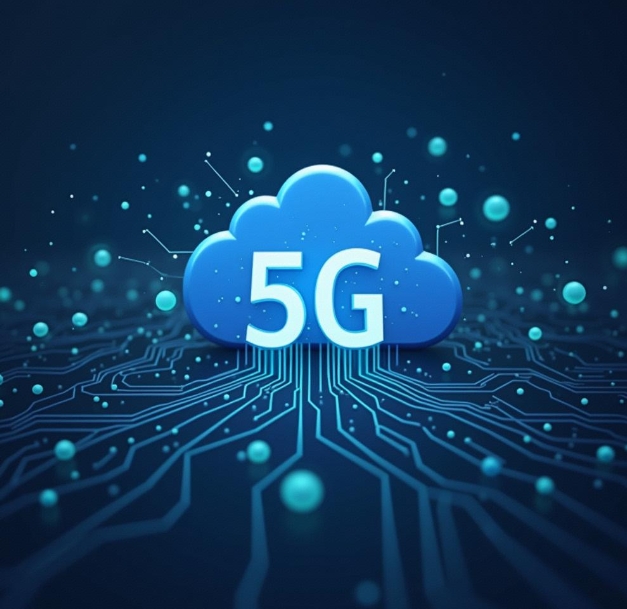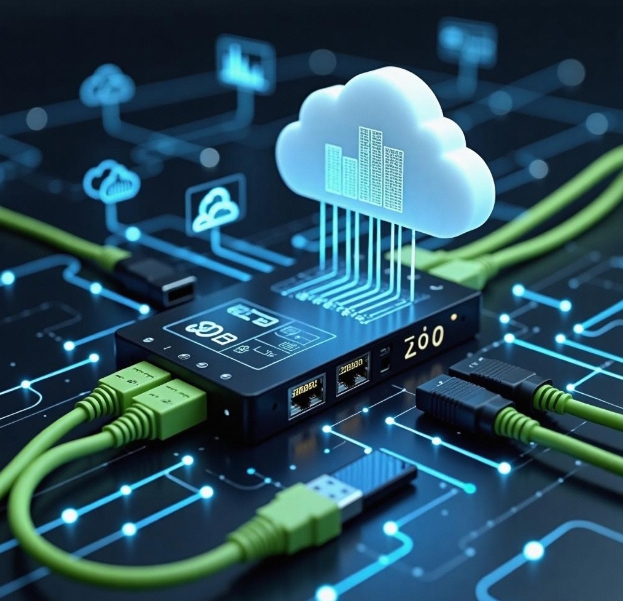Integration of Cloud Computing and 5G Technology: Enhancing Network Performance and Efficiency
- latest articles
- 1.DApp Development & Customization: Merging Diverse Market Needs with User Experience 2.Analysis of the Core Technical System in DApp Project Development 3.How to achieve cross-chain interoperability in Web3 projects? 4.How does the tokenization of points reconstruct the e-commerce ecosystem? 5.How to Set and Track Data Metrics for a Points Mall? 6.What is DApp Development? Core Concepts and Technical Analysis 7.Inventory of commonly used Web3 development tools and usage tips 8.Development of a Distribution System Integrated with Social E-commerce 9.Six Key Steps for Businesses to Build a Points Mall System 10.What is DApp Development? A Comprehensive Guide from Concept to Implementation
- Popular Articles
- 1.Future Trends and Technology Predictions for APP Development in 2025 2.Analysis of the DeFi Ecosystem: How Developers Can Participate in Decentralized Finance Innovation 3.From Zero to One: How PI Mall Revolutionizes the Traditional E-commerce Model 4.DAPP Development | Best Practices for Professional Customization and Rapid Launch 5.Recommended by the Web3 developer community: the most noteworthy forums and resources 6.From Cloud Computing to Computing Power Leasing: Building a Flexible and Scalable Computing Resource Platform 7.How to Develop a Successful Douyin Mini Program: Technical Architecture and Best Practices 8.Shared Bike System APP: The Convenient Choice in the Era of Smart Travel 9.How to Create a Successful Dating App: From Needs Analysis to User Experience Design 10.From Design to Development: The Complete Process of Bringing an APP Idea to Life
With the rapid advancement of information technology, cloud computing and 5G technology have become two major pillars of today's digital transformation. Cloud computing, with its powerful computing capabilities and storage resources, has become an indispensable part of daily operations for both enterprises and individuals. Meanwhile, 5G technology, as the next generation of mobile communication, demonstrates immense potential across various industries due to its high speed, low latency, and massive connectivity.
The integration of cloud computing and 5G technology represents not only synergistic technological progress but also a profound transformation of the entire information technology industry. Their combination provides enterprises with more efficient and flexible network environments, enhances network performance and efficiency, and paves the way for next-generation digital services.
I. Basic Overview of Cloud Computing and 5G Technology
1.1 Basic Concepts of Cloud Computing
Cloud computing is an internet-based computing model that centralizes computing resources (such as servers, storage devices, and applications) in data centers through virtualization technology, providing services on-demand via the network. Key features of cloud computing include on-demand services, elastic scalability, and resource sharing. It eliminates the need for users to invest in and maintain expensive hardware, allowing them to lease computing resources based on actual needs, thereby reducing costs and improving efficiency.
The core advantage of cloud computing lies in its high flexibility and scalability. Driven by technologies such as big data analytics, artificial intelligence, and the Internet of Things (IoT), the application scenarios of cloud computing have become increasingly diverse.
1.2 Basic Concepts of 5G Technology
5G is the fifth generation of mobile communication technology, building on the strengths of 4G while further enhancing network speed, capacity, latency, and connectivity. 5G can achieve speeds of up to tens of Gbps per second, reduce latency to below 1 millisecond, and support connections for millions of devices per square kilometer. This makes 5G not only highly promising for mobile communication but also widely applicable in fields such as the Internet of Things, autonomous driving, and smart manufacturing.
Key characteristics of 5G include:
Ultra-high bandwidth: Enables smooth operation of applications like high-definition video, virtual reality, and augmented reality.
Low latency: Supports real-time responses and precise control, such as in remote surgery and autonomous driving.
Massive connectivity: Supports the connection of large-scale devices, facilitating the widespread adoption of the Internet of Things.
II. The Necessity of Integrating Cloud Computing and 5G Technology
2.1 Efficient Data Processing and Storage Needs
With the widespread adoption of 5G networks, an increasing number of devices and sensors are connecting to the network, generating massive amounts of data. This data requires not only fast transmission but also efficient storage and processing capabilities. Traditional edge devices or local servers face bandwidth bottlenecks and insufficient computing power when handling such vast amounts of data.
At this point, cloud computing can leverage its powerful resource integration capabilities to provide processing and storage solutions for massive data. Through virtualization technology and distributed architecture, data from 5G networks can be quickly transmitted to the cloud for analysis and storage, enhancing the efficiency and performance of the overall system.
2.2 Reducing Latency and Improving Response Speed
The low latency of 5G is a key factor in its popularity for applications with extremely high real-time requirements. However, although 5G networks themselves provide low latency, relying entirely on remote data centers for data processing tasks may still be affected by network transmission delays.
To further reduce latency, the integration of 5G networks and cloud computing can be achieved through edge computing. Edge computing involves moving data processing tasks from cloud data centers to devices or nodes at the network edge, bringing them closer to the data source, reducing transmission delays, and improving response speed. With edge computing, data processing and analysis can occur near the user, eliminating the need for prolonged waits for cloud processing.
2.3 Enhancing Network Flexibility and Scalability
5G technology supports high concurrency, high speed, and massive connectivity, providing enterprises with more flexible network environments. However, the ability to flexibly scale network resources according to actual needs has become key to achieving efficient network management. The elastic scalability of cloud computing addresses this gap.
Cloud computing's resource scheduling and allocation mechanisms can dynamically adjust computing, storage, and network resources based on actual load demands. This elastic scalability enables 5G networks to quickly respond and optimize resource configurations for different application scenarios and user needs, ensuring efficient network operation.

III. Application Scenarios of Cloud Computing and 5G Integration
3.1 Smart Manufacturing and Industrial Internet
In smart manufacturing and the Industrial Internet, 5G technology provides robust support for high-speed communication between devices, while cloud computing ensures the storage and analysis of massive data. Through 5G networks, various smart devices in factories can transmit data to the cloud in real time, and cloud computing platforms can perform in-depth analysis of this data, enabling intelligent production management, predictive equipment maintenance, and quality control.
For example, by integrating 5G and cloud computing, manufacturing enterprises can achieve remote monitoring, equipment failure prediction, and production process optimization, thereby improving production efficiency and product quality.
3.2 Autonomous Driving and Intelligent Transportation
Autonomous vehicles rely on high-speed, low-latency communication networks to exchange information in real time, ensuring the accuracy and timeliness of driving decisions. The low latency of 5G technology is crucial in this application. Meanwhile, cloud computing provides powerful computing resources, helping autonomous driving systems process large amounts of environmental perception data in real time and perform complex decision-making analyses.
Through the integration of 5G and cloud computing, autonomous driving technology can make more precise driving decisions based on real-time road information, traffic conditions, and vehicle networking data, enhancing the safety and efficiency of the overall transportation system.
3.3 Augmented Reality and Virtual Reality
Augmented Reality (AR) and Virtual Reality (VR) technologies require substantial data transmission and high-speed computing support. The high bandwidth and low latency of 5G enable smoother AR and VR experiences. Cloud computing, in turn, provides these applications with powerful computing and storage resources, supporting more complex scene rendering and real-time interaction.
By combining 5G and cloud computing, AR/VR technologies can deliver more immersive and high-quality experiences in fields such as remote healthcare, education and training, and entertainment.

IV. Challenges and Future Prospects of Cloud Computing and 5G Integration
4.1 Security Issues
As cloud computing and 5G technologies integrate, data transmission and processing in networks become more complex, making security issues increasingly critical. Ensuring user data privacy and security, as well as preventing network attacks, are urgent challenges in the integration of cloud computing and 5G.
4.2 Infrastructure Development
Although cloud computing and 5G technologies hold immense theoretical potential, their practical application requires robust infrastructure support, including data centers, network equipment, and edge computing nodes. Establishing efficient and reliable infrastructure to ensure the seamless integration of 5G and cloud computing will be key to future technological development.
4.3 Standardization and Interoperability
Currently, the technical standards and architectures for 5G and cloud computing are not fully unified, and compatibility issues may arise between equipment and systems from different manufacturers and operators. To achieve broader applications, promoting standardization and interoperability will be an important direction for future technology ecosystem development.
Conclusion
The integration of cloud computing and 5G technology brings unprecedented opportunities and challenges. Their complementary advantages significantly enhance network performance and efficiency, driving digital transformation across various industries. In the future, as technology continues to evolve and improve, we can anticipate smarter, more efficient, and more secure network environments, contributing further to global economic development and societal progress.
-

Applications and Challenges of Cloud Computing in the Internet of Things (IoT)
With the continuous advancement of information technology, cloud computing and t···
-

Integration of Cloud Computing and Artificial Intelligence: Enhancing Intelligent Applications
With the rapid advancement of technology, cloud computing and artificial intelli···
-

Data Security and Privacy Protection in Cloud Computing Applications
With the continuous advancement of information technology and the rapid developm···

 Blockchain
Blockchain










